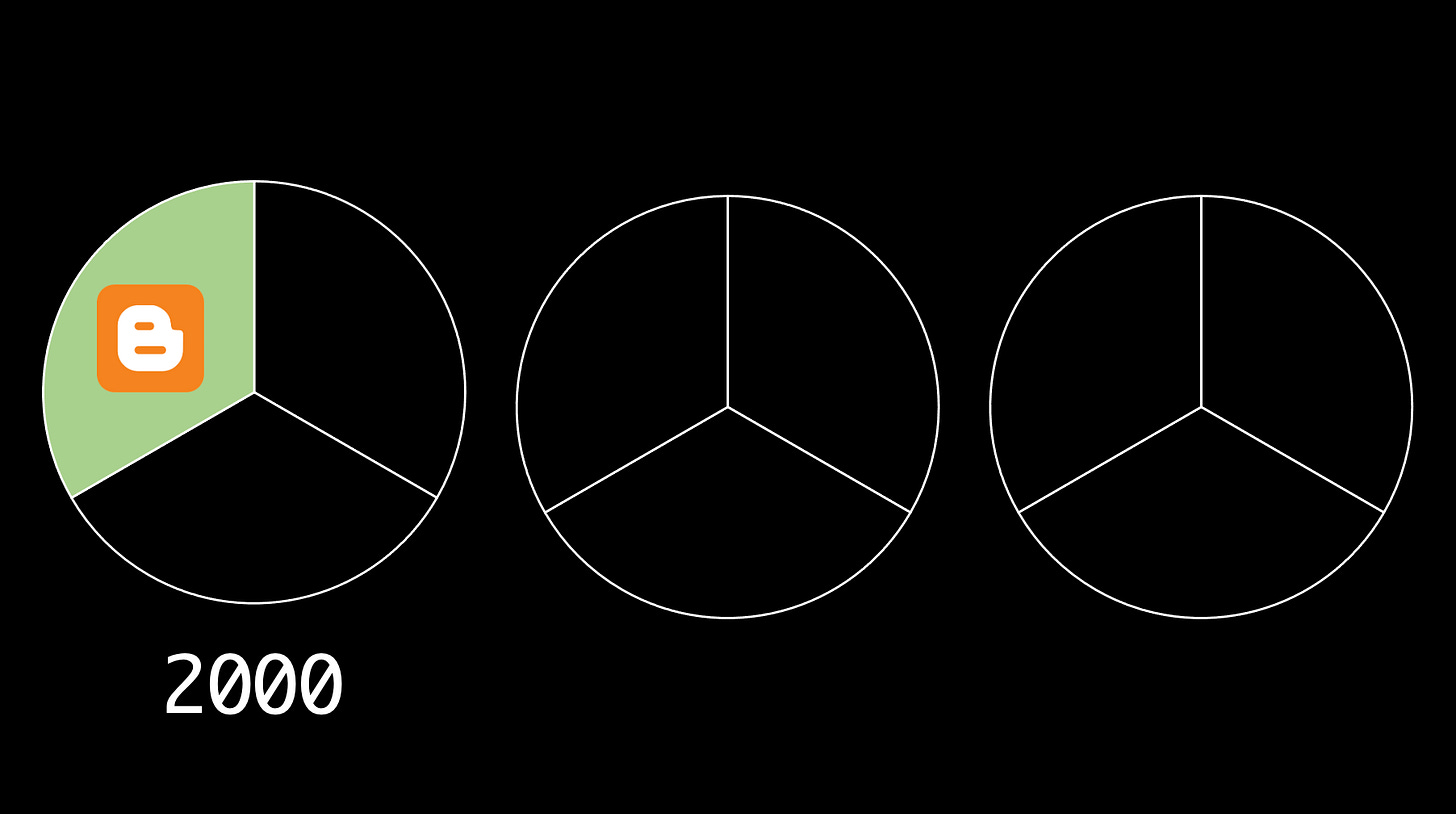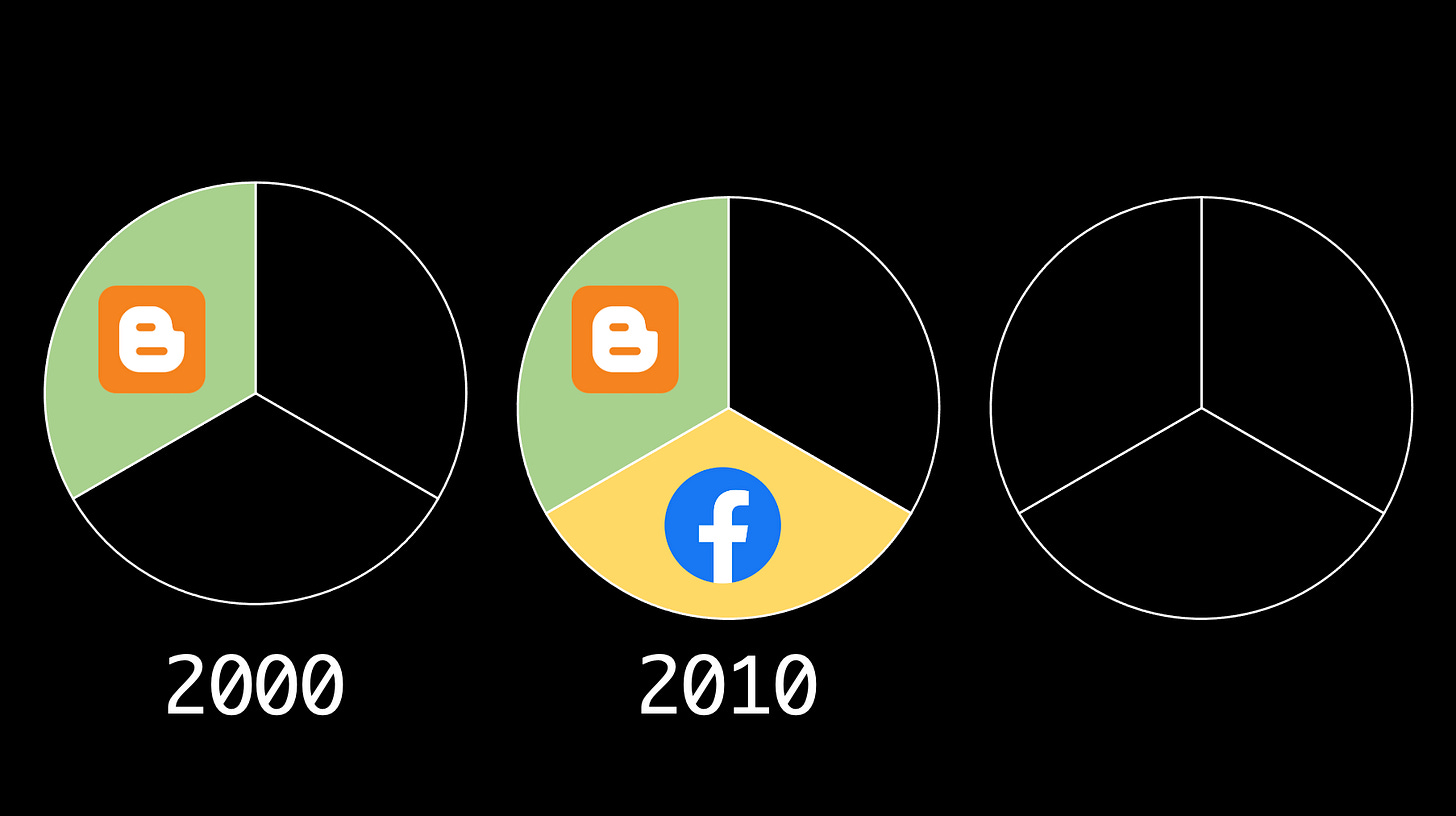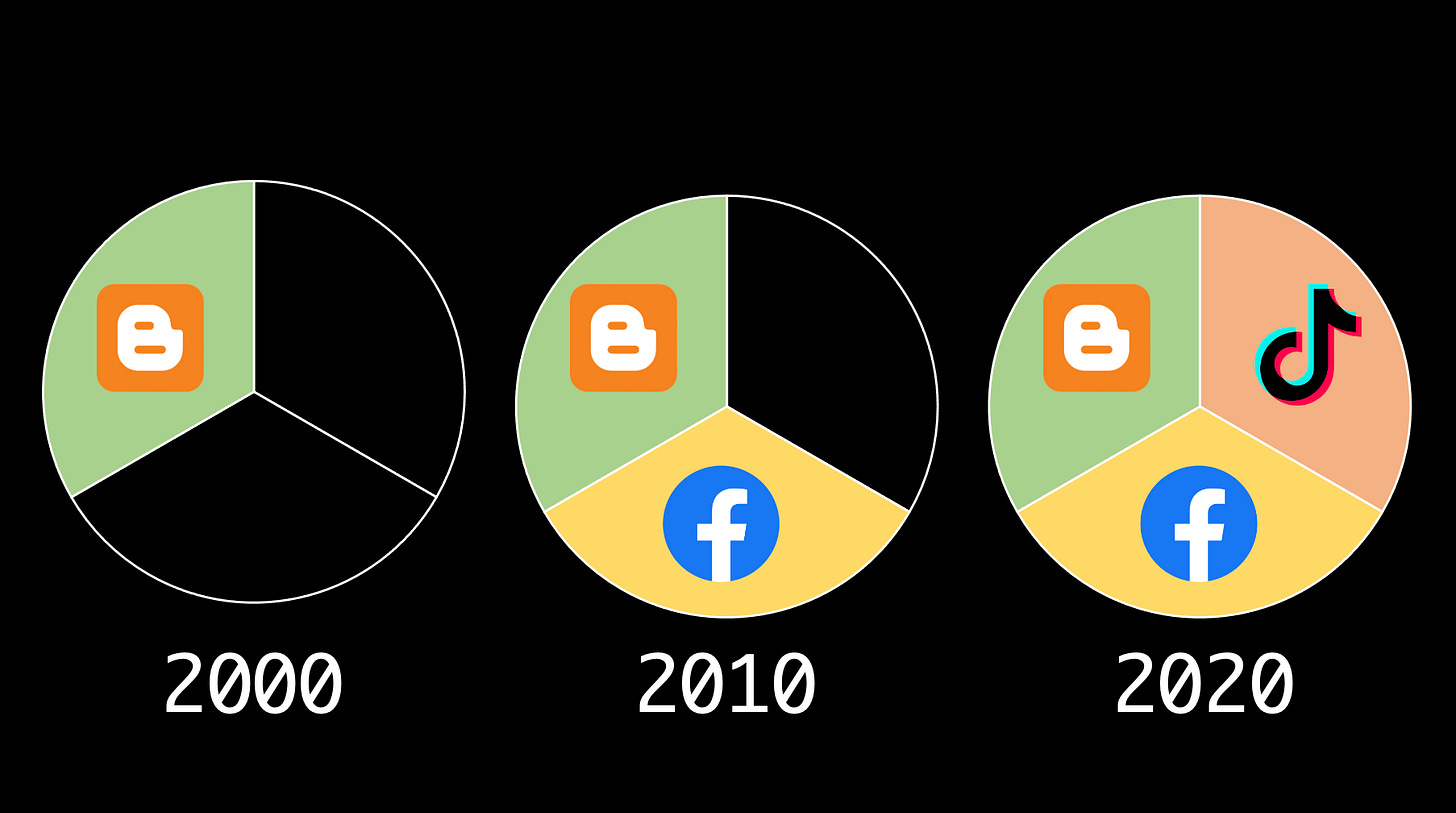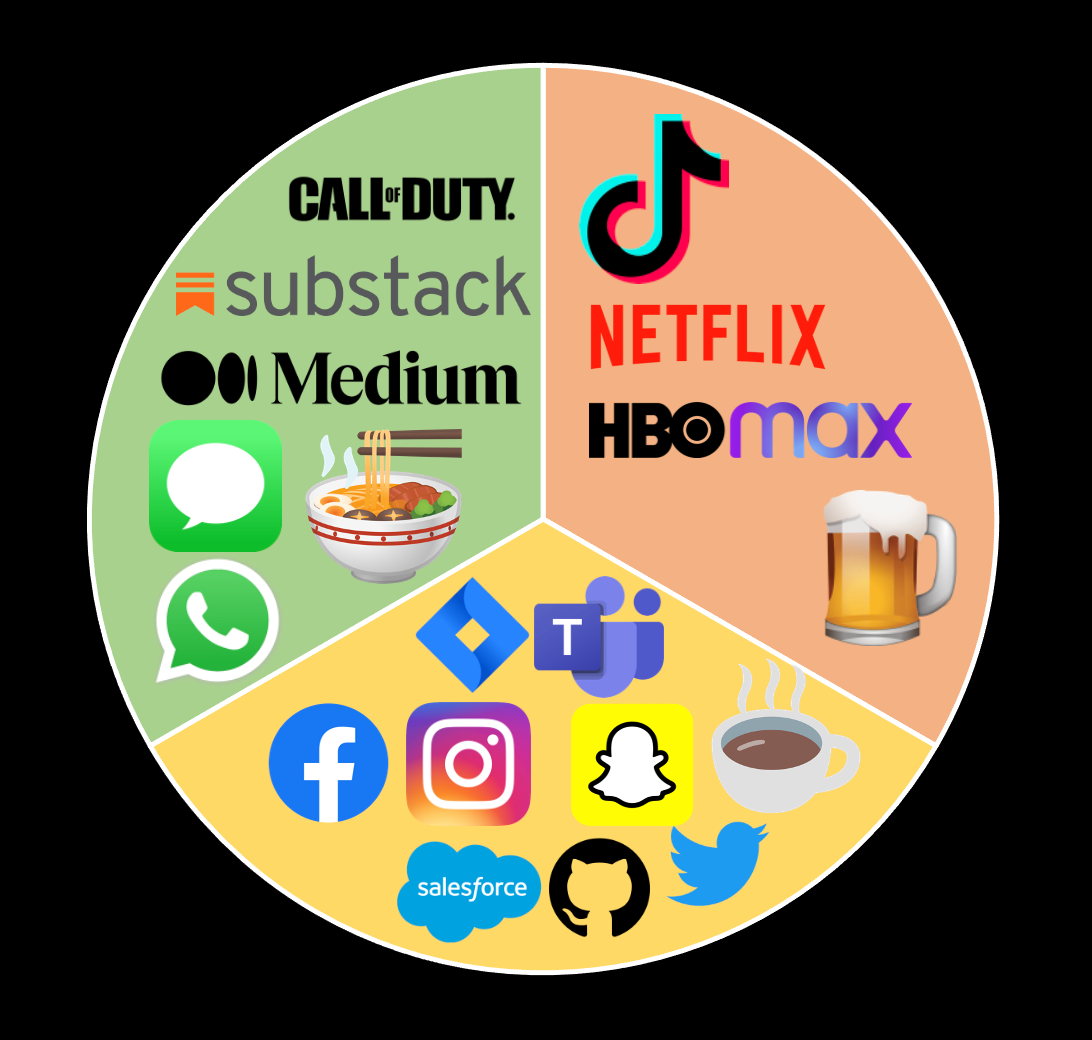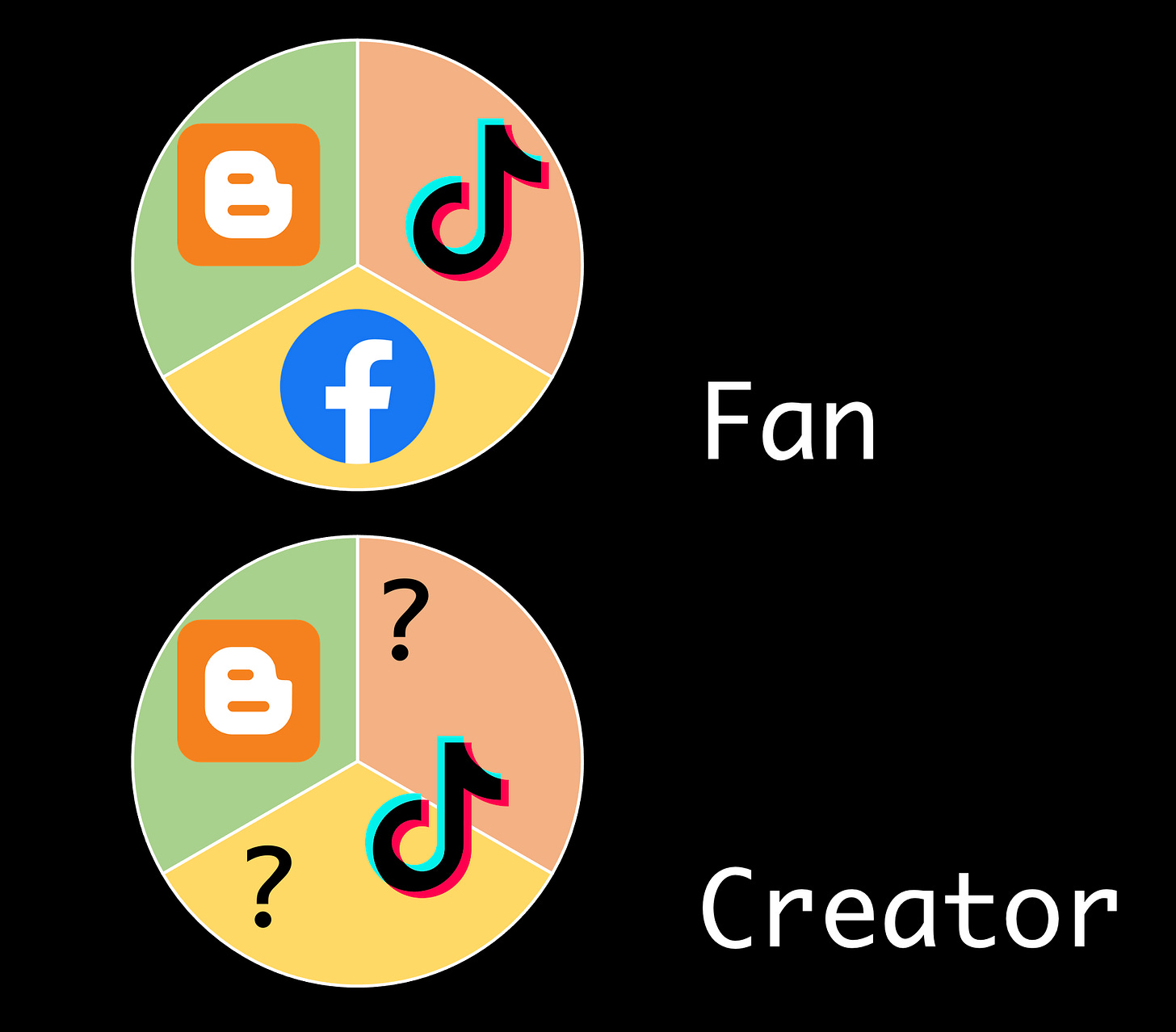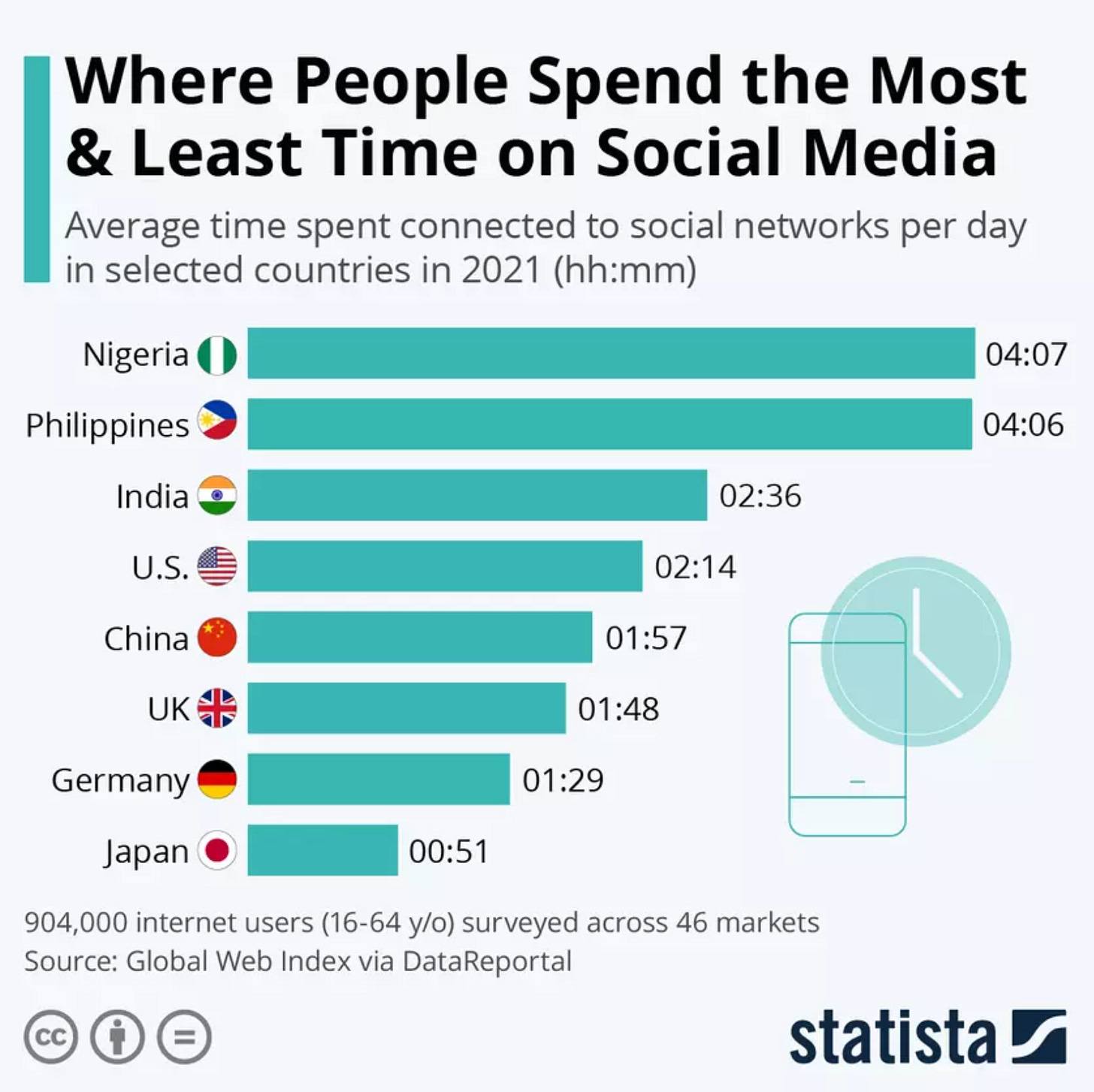The Three Clocks
There are three clocks in a day, and you need to think about them when building something new
A day is 24 hours long and can be divided into three parts: 8 hours of work, 8 hours of sleep, and 8 hours of chill (relaxing / chill / fun). I call these the three clocks of life: the “Work Clock”, the “Sleep Clock", and the “Chill Clock”.
Every person has these three clocks in a day, though the duration varies from profession to profession. Doctors for example have more work and less chill, artists have more chill and less work, investment bankers have more work and less sleep, military personal have lower chill, the list goes on. When it comes to building any app, founders need to think about the three clocks, because there is no way to create more time and make their users use their products during that time.
Lets look at how these clocks have evolved over the past 30-40 years
2000 and Before
Before 2000, the internet was a very different place. There were no social media apps (Facebook wasn’t around then), and every user had their own representation on the internet (blogger, personal websites, etc.). Popular internet apps like Blogger occupied the first 8 hours of a person’s clock: the chill part. People did not visit the internet at work, and people did not sacrifice sleep to be on the internet. People used the internet when they had time off TV. Computers were expensive, internet was slow, and search engines’ capabilities were limited. In short, people spent time on the internet because they wanted to, not because they had to, or because work forced them to. And most people certainly didn’t sacrifice their sleep time to stay up on the internet (except some DOOM players).
2010
After Facebook was created in 2004, after Google, and after Wikipedia, the internet became a different place. Countless social media and content apps stormed our lives, and everyone wanted to spend more time on the internet.
The most popular apps in this time period (Facebook and Instagram) occupied the second 8 hours of a person’s clock: the work part. People started checking their Facebook feed during work, liking their friends’ pictures on Instagram during toilet breaks, and sending funny snaps to their partners while on lunch break. People of course did use these apps when they had free time too (thus stealing market share from Blogger and the older apps) but the “home” of these apps was in the second clock of a person’s life.
It is important to define the concept of a “home” for a specific app. Every successful app or product has a home in a person’s clock. If a product does not have a home in the clock for a target audience, it will always be dominated by other apps.
2020
After TikTok, the internet transformed again. People had Wikipedia and blogs off work, people had Instagram while working, and people got TikTok to use when they were tired and had nothing else to do (what I call “The Zombie Theory”, which I will write about soon).
TikTok occupied the third 8 hours of a person’s clock: the sleep part. When used ideally, TikTok is not different from sleep. The brain is on cruise mode, and users keep endlessly scrolling on the content TikTok provides them with. Like with Instagram in the second clock, there is a large degree of intersection between TikTok and Instagram, and TikTok and Substack. But the "home” of TikTok is in the third clock of a person’s life, the sleep clock.
Building something new
There are multiple ways to think about a startup’s customers: you can think about a customer’s needs, you could think about what value you are creating for the customer, you could think about what 10x improvement you are creating for the customer, and more. But what is common among these ways of thinking is that a new product requires the customer to spend time on it. And that time needs to come out of the three clocks in a person’s life.
Lets take an example: Wells Fargo’s mobile app. Sure, everyone needs a bank account to get their pay checks in month after month. But no matter how bad or good Wells Fargo’s mobile app is, you need to spend time to use the app.
For most people, this time comes out of the Chill Clock. Its night, you are budgeting on Excel, and you check your balance to make sure you’re on the right track. If there’s a flaw in the app or if you made a chargeback on your credit card and need to call back, it spills over to the Work Clock. But these apps will never take time out of the Sleep Clock (unless you’ve been scammed and need your account frozen immediately).
Another example: Call of Duty. Games are a great example of products that are very successful in dominating the Chill Clock. Sometimes, they take time from the Sleep Clock as well (teenagers playing CoD after bedtime). But it is very unlikely people take time out of their Work Clock to play Call of Duty.
We can visualise all products in existence through the three clocks. Any product that is used by a customer needs them to spend time, so there is no product that can not be analysed in the three clocks framework.
Parallel Clocks
Social media has changed the nature of work. Taking the example of TikTok, the content consumed by a person in their Sleep Clock was produced in someone else’s Work Clock. This is in contrast to Facebook, where the content was produced by a person in their Work Clock and consumed by a person in their Work Clock. Lets assume two clocks: one for the fan / consumer and one for the content creator / influencer.
The creator’s Sleep Clock may or may not be the same as the fan’s Sleep Clock (ie: the creator may not use TikTok for sixteen hours). This presents an interesting opportunity for founders who want to build new social apps. How do you reduce the fatigue for content creators, so they use the app more? Can you create another app that content creators can use in their Sleep Clock? Can you create another app that content creators can use in their Work Clock? In essence, the creation of social media work has given rise to a new block of time, only when seen in parallel.
You can take this analysis further, and think about how everyone’s clock is interconnected and arrive at a simulation theory, but that is left as an exercise to the reader.
Every App competes with Social Apps
For better or worse, people spend an obscene amount of time on Social Apps.
If you take into account open / close time, lingering thoughts about content to post on social platforms, and more, time spent will be higher.
The average American works for 4 hours (decreasing or constant). The average American also spends 2 hours on social media (increasing). If you think of “Work” itself as an app, it competes with social media for time. This is the case for other apps (educational, tv, etc.) which compete directly or indirectly with work and social media. And that is why Uber Eats has a stories feature (to get people to spend more time on their apps).
Thinking about Time
All apps, regardless of the market they operate in, require time to operate. And all apps would love people spending more time (engagement metrics go brrr). In conclusion, founders building a new app need to think about which clock of life they want to focus on.



